Soy Doctora en Ciencias Biológicas de la Universidad Nacional Autónoma de México, Magister en Ciencias Biológicas de la Universidad Nacional de Colombia, Especialista en Docencia para la Educación Superior de la U.D.C.A y Bióloga de la Pontificia Universidad Javeriana. Mi actividad académica ha sido de carácter interdisciplinar colaborando en actividades de docencia en pregrado y posgrado con diferentes disciplinas como la arquitectura y el diseño industrial, la ingeniería civil, la planeación territorial y la gestión ambiental. Inicié mi actividad investigativa en la ecología de poblaciones y comunidades analizando el efecto del aprovechamiento de especies forestales sobre poblaciones de otras especies de interés comercial, así como el efecto de la calidad de sitio sobre el crecimiento de especies forestales. Durante mi doctorado incursioné en la ecología de los ecosistemas, analizando el efecto de la historia de uso sobre variables ecosistémicas. Posteriormente amplié mi interés hacia los sistemas socioecológicos con énfasis en la valoración biofísica y sociocultural y la distribución espacial de los servicios ecosistémicos especialmente del bosque tropical seco y recientemente en ecosistemas de bosque andino y urbanos.
GRUPOS DE INVESTIGACIÓN: SOSTENIBILIDAD AMBIENTAL
LÍNEAS DE INVESTIGACIÓN: Sostenibilidad Ambiental y Sostenibilidad social
PROGRAMA: Maestría en Ciencias Ambientales
CATEGORÍA MINCIENCIAS: Asociado
NIVEL DE FORMACIÓN: Doctorado
LINEAS DE TRABAJO: Servicios ecosistémicos, Ecología de ecosistemas, Ecología del paisaje.
PRODUCTOS DESTACADOS
The database of the PREDICTS (Projecting Responses of Ecological Diversity In Changing Terrestrial Systems) project
Fecha de publicación: 05/01/2017
The PREDICTS project—Projecting Responses of Ecological Diversity In Changing Terrestrial Systems (www.predicts.org.uk)—has collated from published studies a large, reasonably representative database of comparable samples of biodiversity from multiple sites that differ in the nature or intensity of human impacts relating to land use. We have used this evidence base to develop global and regional statistical models of how local biodiversity responds to these measures. We describe and make freely available this 2016 release of the database, containing more than 3.2 million records sampled at over 26,000 locations and representing over 47,000 species. We outline how the database can help in answering a range of questions in ecology and conservation biology. To our knowledge, this is the largest and most geographically and taxonomically representative database of spatial comparisons of biodiversity that has been collated to date; it will be useful to researchers and international efforts wishing to model and understand the global status of biodiversity.
Más información ⇨
- « Anterior
- 1
- …
- 4
- 5
- 6
- 7
- 8
- Siguiente »

